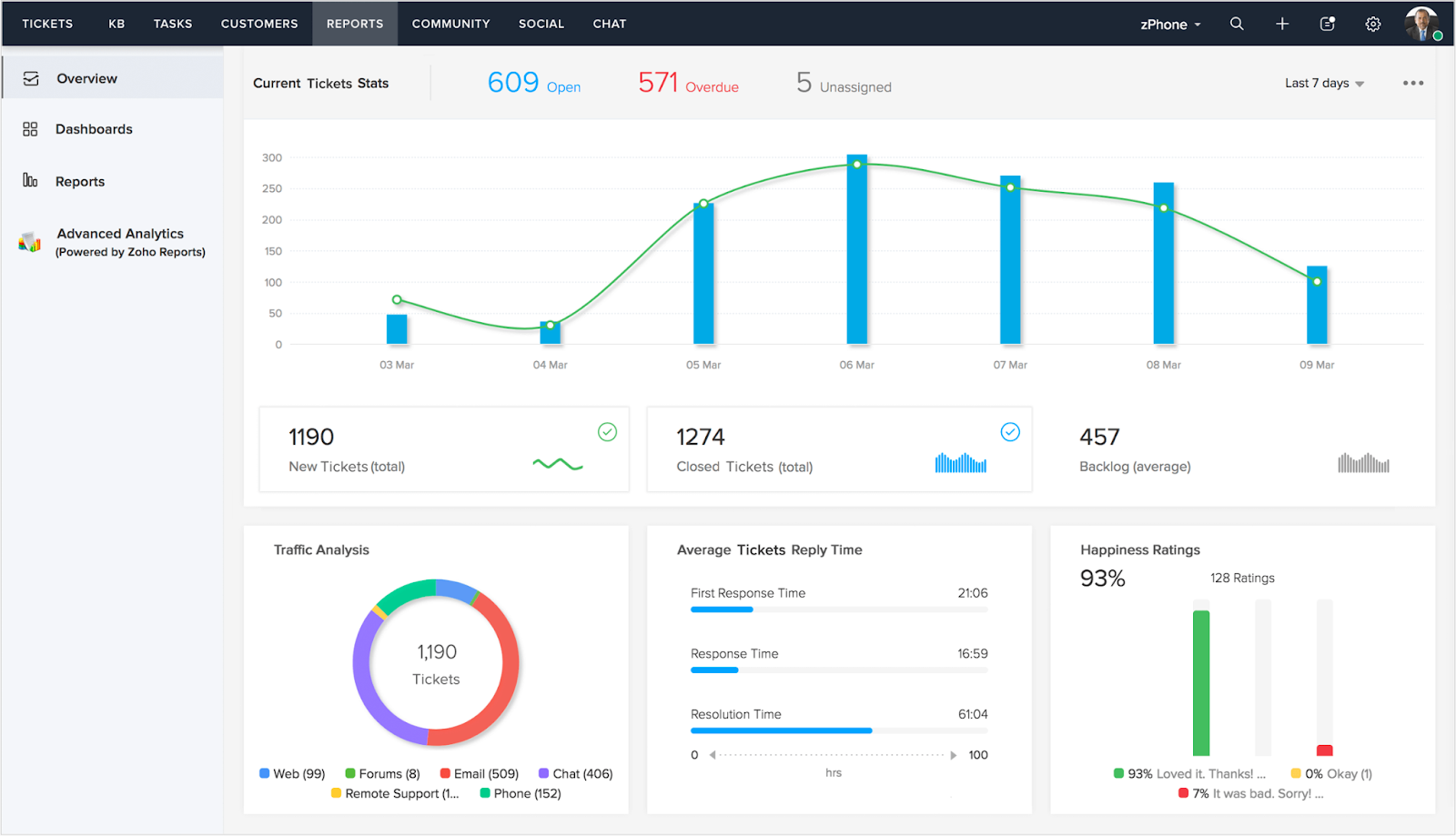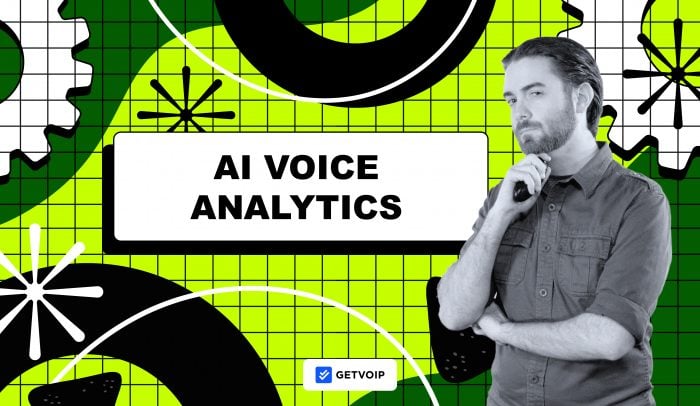AI voice analytics takes raw audio from calls, meetings, and conversations and transforms them into structured data to reveal everything your business needs to grow. Customer sentiment, agent performance, compliance risks, and business intelligence are all thoroughly examined and analyzed at scale. This technology is a must-have if your organization views customer experience (CX) and operational excellence as key drivers of long-term growth.
The global call center market was valued last year at $352.4 billion[*], yet most organizations are said to just look into 1-2% of their customer interactions using traditional manual sampling.[*] AI voice analytics is here to extract insights from all your interactions, changing paradigms, and ensuring all customer voices are heard.
- What Is AI Voice Analytics?
- How It Works
- Benefits
- Top Use Cases
- Choosing a Solution
- Key Challenges
- FAQs
What Is AI Voice Analytics?
AI voice analytics uses artificial intelligence (AI) to automatically analyze any spoken conversations to get key information from audio data like meaning, emotion, and any actionable insights. Traditional speech analytics focuses just on basic transcription and keyword spotting, where AI-powered systems dig deeper to get context and emotional nuance out of your conversations.
AI voice analytics works on several moving key components like:
- Transcription engines: These convert speech to text quickly and accurately
- Sentiment and emotion detection: This feature will identify and sort people by how they feel during conversations
- Natural language processing (NLP) models: Extract intent, meaning, and common topics from any transcribed text
- Acoustic analysis: Spot-check and examine your caller’s tone, speaking rate, voice quality, and pitch
All of these elements coalesce into a powerful tool that takes your unstructured audio data and makes it something searchable, analyzable, and relevant to business decisions.
How AI Voice Analytics Works
There is a journey when AI voice analytics takes your raw audio and transforms it into something actionable and realized, we’ve broken it down to three simple stages. Each is powered by specialized AI modeling and processing techniques calibrated to get you the maximum out of each conversation.
Voice Capture & Transcription
A truly good voice analytics system has sophisticated audio capture systems that are battle-ready for the reality of real-world conversations. These systems will take in calls in real-time and filter out background noise, do diarization (separation of multiple speakers on the call), and even manage audio quality fluctuations as each channel and device varies. These same techniques apply to and empower your AI receptionists.

Automatic speech recognition (ASR) software has hit a new accuracy rate high of 95% for clear audio.[*] Transcriptions happen in just seconds, as spoken work becomes timestamped text and metadata is preserved as to who said what and when.
AI Models & Signal Processing
Once the data is transcribed, NLP modeling steps in to look into the text to find topics, see where compliance may have been ignored, discover questions versus statements, and just get the flow of conversation. Meanwhile, acoustic processing analysis will take in the original raw audio and flag emotional indicators (think raised voices for annoyance, long pauses for hesitation, fast speech for excitement).

The most advanced sentiment analysis software can see up to 20 different emotional states, just off voice alone, leaving those elementary positive/negative binaries behind. NLP can even spot weird language patterns, cite potential security risks, and see where agents deviate from scripts.
Data Visualization & Integration
Analyzed data is filtered into visual dashboards to make sense of the complex patterns uncovered through charts, sentiment timelines, keyword clouds, and trend graphs. All of these interfaces are directly uplinked into your existing business systems like CRMs, contact center platforms, or relevant business intelligence tools so the right people have access to the information at all times.

Real-time alerts keep your supervisors hooked in when conversations take a turn for the worse and need immediate attention and action (angry customers or compliance violations). Automation triggers take the guesswork out of launching follow-up workflows, updating customer records, or routing calls to the right staff members based on detected sentiment.
Benefits of AI Voice Analytics
Your organization should implement voice analytics to get accurate reporting on measurable improvements across CX, operational health, and risk management. This technology takes into account your biggest thorns in comprehending voice interactions at scale. Here are some immediate benefits of AI voice analytics adoption:
Customer Sentiment Understanding
AI voice analytics are here to assist you in finding out how your customers really feel about you, using their emotions, intent, and perceived satisfaction levels at all stages of their conversation. This technology’s biggest boon is finding where frustration happens before customers can even outright complain, and spotting satisfaction even when surveys are left unfinished. It’s said that companies that use sentiment analysis have 15-20% improvement in customer satisfaction scores (CSAT) just by reacting to emotional cues others don’t notice.[*]
Agent Performance Improvement
Real-time coaching and automatic quality assurance (QA) will take how organizations develop teams to a new frontier. Supervisors will get immediate notifications when agents need their help, AI will spot who the top performers are, and parse what behaviors make them successful for others’ training. Every call becomes a chance for coaching, not just shooting blind on random sampling.
The system will automatically score interactions on your own personalized quality criteria, freeing up your QA teams to uncover insights on more complex cases. Organizations say they get up to 40% reductions in average handling time after using AI-powered coaching programs.[*]
Operational Excellence and Efficiency
By looking into every conversation automatically and systematically, your team eliminates the very real bottleneck that are manual call reviews. Teams that only look into say 50 or 100 calls max per month now get information from thousands of interactions from all sorts of channels. It makes for more comprehensive coverage that reveals patterns that would not show up in smaller samples, spots systemic issues speedily, and even allows for a more data-driven resource allocation methodology overall.
Voice-of-the-Customer Insights
Conversation data is aggregated to underscore the following key factors from your interactions:
- Customer pain points
- Emerging product-related issues
- Feedback on your service quality
- Relevant market trends
Product teams get to see what features your customers actually care about, marketing teams can figure out what messages resonate most with potential customers, and execs get to see first-hand the brand’s perception using authentic conversations in the thousands. Do not let assumptions from surveys cloud the real-world evidence when planning.
Compliance and Risk Detection
Automate your monitoring and flag potential regulatory violations, potentially risky statements from your human agents, and any inappropriate language as soon as the words are spoken. AI voice analytic tech verifies using required disclosure, sees what prohibited topics are touched on, and spots conversations that will need legal review in an active manner that defends your business from liability. Financial services will use voice analytics to ensure they comply with each and every mandate, versus just the 1-2% possible via manual reviews, to cut down on regulatory risk and maintain rich audit trails that show bad faith actors in just seconds.
Top Use Cases Across Industries
AI voice analytics has found its place in a wide array of sectors, each with its own demands and unique pathways to using the tech to settle industry-specific issues. The following examples show how voice analytics can transform operations and outcomes in each sector while complying with industry best practices and regulatory requirements:
Contact Centers & CX
Contact centers have the most mature and developed application when it comes to voice analytics. Key stakeholders have it down to a science of how to leverage this technology to take on quality assurance, agent coaching, and emotion detection across millions of annual interactions. Systems will provide real-time guidance to agents mid-call and even suggest relevant knowledge articles when detecting customer confusion.
When things become dire, it will alert supervisors while even recommending next-best actions using existing and similar successful past interactions. The best contact centers achieve first-call resolution rates that reach as high as 80% because they know how to use AI to guide agents toward proven and texted conversation patterns while identifying training opportunities from every interaction.[*]
Healthcare
Healthcare applications will key in on cognitive decline detection through conversational voice analysis. AI steps in and monitors tone, vocabulary complexity, speech patterns, and conversational coherence over time for decline or holding patterns. Clinicians can use this technology to identify early signs of dementia, Alzheimer's, or other cognitive conditions and intervene earlier on.

Voice-based screening tools are here to spot cognitive impairment with over 85% accuracy.[*] In doing so, it provides this non-invasive monitoring option that works in tandem with traditional assessments while tracking patient progress between clinical visits to ensure a wide swath of coverage and care.
Financial Services
Banks and investment firms employ voice analytics for fraud detection, which relies on voice biometrics and leveraging behavioral pattern analysis to ensure customers are who they say they are. Compliance monitoring ensures regulated conversations meet legal requirements by verifying disclosures, detecting insider trading discussions, and flagging potentially manipulative language.
Financial institutions using voice biometrics say they reach up to 80% reductions in fraud losses while making customers' verification processes less invasive and frictionless.[*] On top of those verification methods, it spots potential cases where coercion or account takeover attempts come into play.
Sales & Revenue Teams
Sales teams using AI voice analytics see 15% higher win rates by recreating and encouraging successful behaviors that also address gaps revealed through comprehensive conversation analysis.[*] Conversation intelligence platforms will look through sales calls to flag and report what lines in the sand set won deals apart from lost opportunities. This also means automatically detecting buying signals, objections, direct competitor mentions, and successful closing techniques: all important elements to consider in a data-driven environment.
Sales leaders get to discover which talk tracks convert and lead to sales, how top performers handle objections or spin them into wins, and when prospects show genuine interest versus polite engagement.
Choosing an AI Voice Analytics Solution
The process of finding your best-fit AI voice analytics platform requires finding which aspects most impact both instant turnkey usability and overall viability.
Accuracy and Model Quality
Transcription accuracy directly impacts each actionable insight; you will need to consider this the tantamount element of your effective voice analytics system. Evaluate solutions on exactly how well they handle industry-specific terminology, parse through regional accents, and challenge fluctuations in audio conditions. Real-time analysis capabilities matter for use cases requiring immediate action, while post-call analysis may suffice for quality assurance applications. The most reliable and trusted ASR systems achieve over 95% accuracy on clear audio but suffer and drop to 75-80% with heavy accents, so be sure to test with actual audio or risk failure.
Integration Capabilities
You need to ensure your chosen platform can actually connect without fail to your existing tech stack, whether that means CRMs, contact center platforms, data warehouses, and business intelligence suites. Native integrations ensure data flows automatically without custom development, while API access enables specialized workflows. Consider whether the solution pushes insights into tools your team already uses daily versus requiring them to adopt another dashboard.
Security and Compliance Considerations
Voice data often means handling sensitive information, which in turn demands only the most robust security controls. Verify your providers and their solutions offer in-rest and in-transit encryption. Other considerations tantamount here: detailed data retention policies (how long will data remain in third-party servers), compliance certifications that vary per industry (think SOC 2, HIPAA, GDPR, etc.), and any role-based access controls. Studies show that over 60% of enterprises say that security concerns are their primary barrier to voice analytics adoption, making this evaluation critical to upper-level stakeholders who hold the purse strings on tools.
Scalability and Performance
Next, be sure to check whether the system handles your current call volumes effectively and if it can grow with your needs without becoming inundated with too much. We've found that cloud-based solutions typically offer elastic scaling versus on-premise deployments, which ultimately may require capacity planning to ensure quality and scale. Processing speed matters because real-time guidance is reliant on sub-second analysis. We also found that batch processing overnight may serve to bolster retrospective quality assurance.
Ease of Use
All the best analytics in the world aren't worth the pixels they show up on if teams don't use them. Evaluate dashboard intuitiveness and ease-of-access, check in and see what customization options you have, and look whether non-technical users can find and access insights without needing senior-level guidance. Implementation complexity matters as solutions requiring months of professional services delay time-to-value when put side-by-side with platforms offering rapid deployment and results.
Key Challenges and Considerations
While AI voice analytics offers immediate opportunities for savings and insights, organizations need to take into account several important considerations before diving off the deep end and risking serious privacy and ethical violations. Here are some of these issues:
- Privacy and compliance: Handling sensitive audio data means keeping GDPR, HIPAA, and other regulations in mind. It also means a fine-tooth comb approach to consent, data retention policies, and cross-border restrictions concerning data transference. Organizations need to weigh analytical value against privacy obligations. All the while, considering implementation of controls and transparently telling customers what information they have
- Accuracy and language coverage: Dealing with accents, dialects, and multilingual environments can be too much for even the most robust ASR technology. Models that were only trained to handle standard dialects may struggle when it comes to regional variations. Mislabeled or underreported data often leads to bias in insights or coaching recommendations
- Infrastructure and scale: Processing thousands of voice data samples in real time demands heavy resources on a computational level. Organizations must look into which of the two, cloud versus on-premise deployment, makes most sense monetarily and operationally. This also means managing costs as call volumes grow, as reliability becomes king when real-time guidance depends on consistent performance
- Model bias and ethics: Ensuring fairness and avoiding discriminatory outcomes means actively looking for sources of bias within your existing systems. Emotion detection paradigms are not always perfectly calibrated to comprehend and cater to all genders, ages, or cultural backgrounds sadly. Not looking for these flaws will lead to unfair agent evaluations or customer treatment. To offset these, you will need regular bias testing and training data built on diversity
- Change management: Integrating analytics insights into workflows effectively requires more than technology deployment. Agents may resist AI monitoring, managers need training to interpret insights productively, and organizations must develop processes that turn data into action rather than generating reports nobody uses
You will only be successful if you take these challenges seriously through wise and transparent implementation planning, ongoing monitoring, and committing your team to following processes. In doing so, you use insights responsibly and shore up well-earned customer trust.
AI Voice Analytics Pave the Way for Profit and Privacy
AI voice analytics no longer has the baggage of being experimental technology. Today, it is an operational necessity for organizations serious about understanding their customers via voice interactions. The combination of correct transcriptions, world-class NLP, and emotional accuracy creates new horizons and visibility into customer conversations, how agents perform, and charts the course for business outcomes. As models improve and costs decrease, the real onus is on how quickly organizations can realize the benefits while managing implementation challenges ethically.



